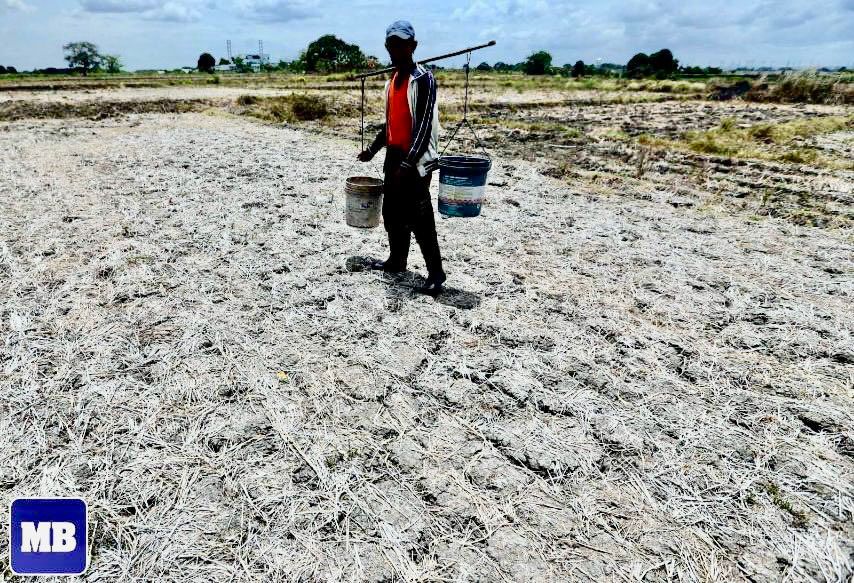Task force counting remaining weeks of El Niño; 276 areas under state of calamity
By Raymund Antonio and Raymund Antonio
With the El Niño phenomenon still expected to persist in the remaining weeks of May, Communications Assistant Secretary Joey Villarama, spokesperson for Task Force El Niño, underscored the need to prepare and evaluate its impact on agriculture, water supply, power generation, and food security.
 A farmland is all dried up due to the absence of rain amid the El Niño phenomenon. (File Photo/MANILA BULLETIN)
A farmland is all dried up due to the absence of rain amid the El Niño phenomenon. (File Photo/MANILA BULLETIN)
During the Bagong Pilipinas briefing on Friday, May 10, the official also disclosed that a total of 276 cities and municipalities are now under the state of calamity due to the effects of El Niño.
“Kahit po sinabi ng PAGASA na pahupa na po ang El Niño eh mayroon pa po tayong ilang linggo sa buwan ng Mayo para po makapaghanda pa rin po at maabatan po ang epekto ng El Niño in terms of iyong ating food supply, water supply, pati iyong ating electricity (Even if PAGASA said that the El Niño is waning, there are still a few weeks left in May to get ready and minimize the effects of El Niño in terms of our food supply, water supply, and electricity),” he said.
PAGASA, the country’s weather bureau, stands for Philippine Atmospheric, Geophysical and Astronomical Services Administration.
“So, hangga’t nandiyan pa po at hindi pa po tini-terminate iyong El Niño at magta-transition na tayo nga to La Niña in the coming months eh dapat po ay listo pa rin tayo at maghanda pa rin po tayo (So, until El Niño is still present and hasn’t been terminated and we will transition to La Niña in the coming months, we still need to be alert and prepared),” Villarama added.
In the same briefing, the official also said that 276 Philippine cities and municipalities have so far have declared a state of calamity due to the effects of El Niño.
Included in that figure are nine different provinces and the entire Bangsamoro Autonomous Region in Muslim Mindanao (BARMM) region.
Villarama shared that many of the provinces that declared a state of calamity are in Mindanao, which includes South Cotabato, Sultan Kudarat, and Zamboanga Peninsula.
He added that President Marcos himself visited the Mindanao provinces because they are the ones firstly affected by El Niño.
However, he stressed the need to continue preparing for the extreme heat brought by El Niño because of its impact.
“So, kahit sinabi po ng PAGASA na pahina na po ang epekto ng El Niño, nandiyan pa rin po iyong damang init na may epekto sa kalusugan, may epekto po sa agrikultura, pati sa ating fishing industry (So, even if PAGASA said that the effects of El Niño have weakened, the extreme heat is still there that affects health, agriculture, and even the fishing industry),” Villarama said.
“Kaya kailangan pa rin tayong magbantay at may posibilidad po na makakaapekto pa rin ang matinding init at tagtuyot sa ating mga probinsiya sa mga susunod pang linggo (That’s why we need to monitor and there’s a possibility that the extreme heat and drought still have effects on our provinces in the coming weeks),” he added.